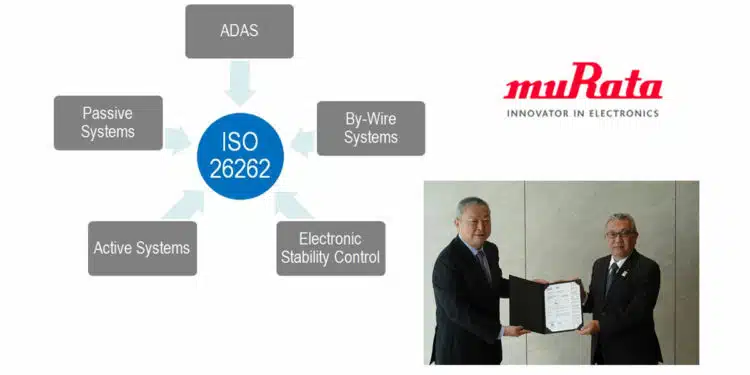Murata Manufacturing Co., Ltd., obtained the ISO 26262 development process certification for Functional Safety Automotive ISO 26262 from the German third-party certifier SGS-TÜV Saar GmbH. The official certification ceremony took place on May 21, 2024 at the company’s headquarters in Kyoto, Japan.
This certification validates that Murata’s development process for hardware and software, as well as systems integrating them, complies with Automotive Safety Integrity Level (ASIL) D, the highest level of safety defined by ISO 26262.
This enables Murata to supply highly reliable functional safety products, including communication modules and sensors, based on its development process.
The safety performance needs of automobiles have increased in recent years with the popularization of automatic driving. Accordingly, automotive components and software are also required to provide a high level of safety performance.
ISO 26262 is an international standard for the functional safety of electrical and electronic equipment installed in road vehicles. The certification recognizes Murata’s development process as capable of complying with ASIL D, the highest of the four safety levels defined by ISO 26262.
This means that Murata’s development process meets a high level of safety suitable even for systems such as airbags and electric power steering, for which malfunction is associated with high risks.
Murata is working to contribute to the realization of a society without accidents by developing both hardware and software products that provide a high level of safety and supplying advanced products to the market.































